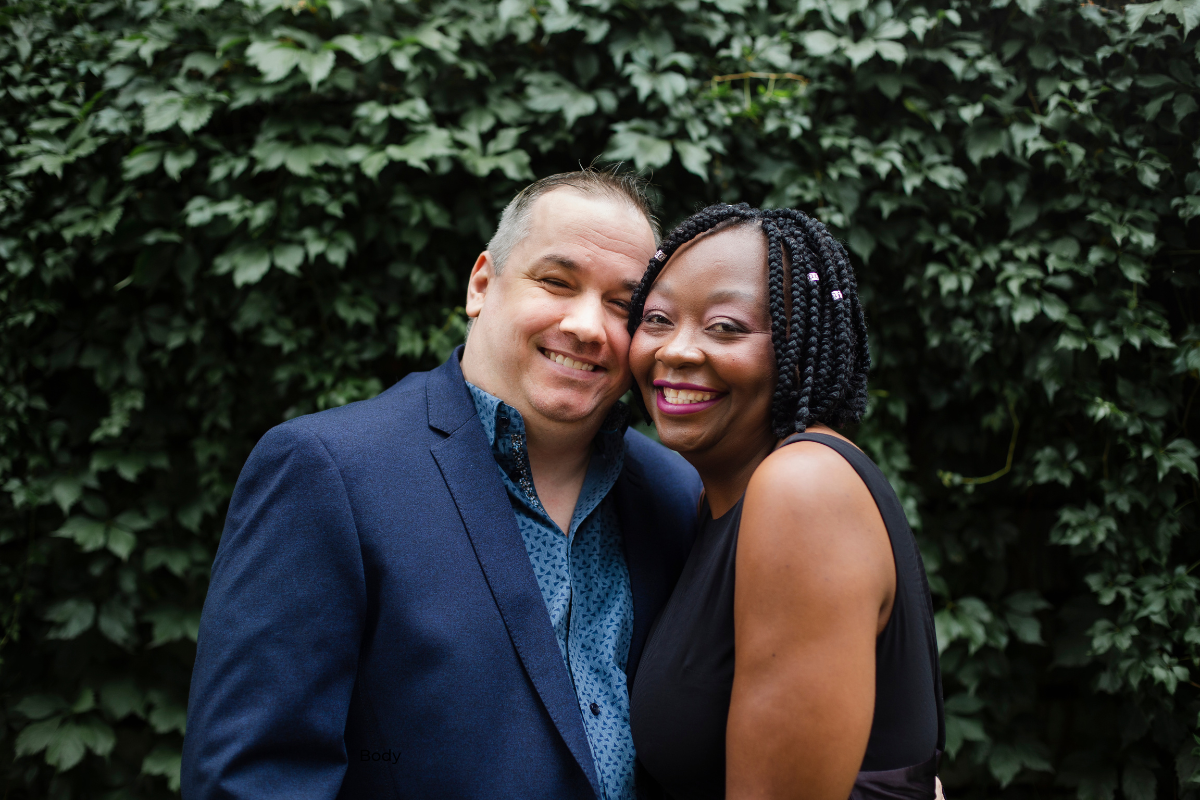
Shared Vision for Interfaith & Interracial Families | Maplewood
Creating a Shared Vision for Interfaith and Interracial Families
Reviewed by Debra Feinberg LCSW at Maplewood Counseling
Building a family with someone from a different culture or faith is a wonderful and unique adventure. Not only are you bringing together two lives, but you’re also blending traditions, languages, and ways of thinking. As you look to the future—especially if children become part of your family—you might ask: How do we bring our worlds together into one happy family life? Which traditions do we choose? How do we answer our children’s questions about who they are?
Why Is This Journey Different?
These are big questions, and it’s completely normal to feel uncertain sometimes. While this journey is rewarding, blending backgrounds takes patience, open talk, and lots of care. You’re not just mixing customs—you’re creating something new and beautiful together. With every step, you have a chance to make your differences strengths.
Setting the Stage: Start with an Open Heart
This guide helps you create a shared vision for your family life. It will walk you through important discussions, help you build plans for your family’s future, and show you how to find communities that celebrate your unique identity. As you read, remember that approaching this journey with kindness and curiosity will carry you far.
Challenges You May Face
How Family Expectations Can Shape Your Path
Starting a family together can bring up tough questions, especially when thinking about beliefs or family customs. Grandparents may have strong wishes about how their grandkids are raised, like wanting certain ceremonies or traditions. This can leave you feeling pulled between what your own family expects and what feels right for you and your partner.
Making Choices About Children’s Identity
Besides this, you’ll face questions about how to teach your children about faith and culture. Will you choose one faith or share both? Should you follow traditions from both sides or find something new? These decisions go deep and touch your core values. It’s easy to worry about giving your child a clear sense of belonging.
Why Teamwork Is Essential
This journey isn’t just about daily choices. More importantly, it’s about matching your hopes for the future. To move forward together, both of you need to feel valued and respected. This helps you build your family’s story with love and unity.
Real Life: A Story of Blending Paths
Let’s meet Aisha and Daniel. Aisha, a practicing Muslim from Pakistan, always thought her kids would follow her faith. Daniel, a secular Jew, felt strongly about his family’s Jewish customs. When they had their first child, both families had different expectations. This put a lot of pressure on Aisha and Daniel.
At first, they struggled to keep everyone happy. So, they decided to see a counselor for help. During therapy, they stopped thinking about “either/or” and started thinking about “both/and.” They chose core values like compassion, justice, and curiosity that were important to both of them.
To bring their backgrounds together, they gave their daughter a name that worked in both cultures. They celebrated Eid and Hanukkah, telling family stories and sharing their values. Their daughter grew up learning about both Islam and Judaism—and she felt proud to belong to both worlds.
Practical Steps to Build Your Family Vision
Let’s break down how you can create your family’s plan, together.
1. Talk About Your Values and Traditions
First, set aside time to talk all about your backgrounds. Turn off distractions. Here are some questions to get you started:
- Which childhood traditions mean the most to you?
- What three values do you most want to teach your kids?
- How do you imagine your children understanding who they are?
- What is your dream for a happy family life?
Listen with care. Don’t debate—just try to understand each other. This is where you’ll find common ground and see what traditions and values overlap.
2. Write a Family Mission Statement
Next, use what you’ve discussed to write a short mission statement. This is a tool you’ll come back to whenever things get tricky. It might be a sentence or a few simple points.
For example:
“Our family is built on love, respect, and curiosity. We celebrate what makes us different. We help our community, and we do our best to make the world kinder.”
Display your mission statement somewhere in your home. Whenever you need to make a tough choice, turn to this statement together for guidance.
3. Connect with Diverse Communities
It’s so important for children to see families like theirs in the world around them. Look for playgroups, faith centers, or schools that celebrate diversity. These places can offer friends for your kids and support for you.
You don’t have to figure this out alone. There are many others walking the same path, and together you can share ideas, celebrate wins, and face challenges.
4. Stand Together as a Team
Once you decide what works best for your family, talk about how you will explain your choices to others. When family or friends ask questions, you might say, “This is what we feel is right for our family.” Setting kind but clear boundaries can help you protect your relationship and give your children confidence in their family story.
Looking Ahead with Confidence
Blending different cultures and faiths in one family can be a beautiful—and sometimes bumpy—adventure. Remember, there is no “one right way.” Every family is unique. By having honest talks, building a family mission, and finding supportive friends and communities, you’re building a home where everyone belongs.
Your children will always have the gift of knowing that love is their true foundation—and that their mixed heritage is something to celebrate.
When two people from different cultural backgrounds fall in love, they create a beautiful tapestry woven from unique traditions, values, and perspectives. This diversity enriches a relationship in countless ways, but it can also introduce unexpected challenges, especially in communication. Have you ever felt like you and your partner are speaking different languages, even when using the same words? Do you find that your intentions are sometimes lost in translation, leading to misunderstandings? If so, you are not alone.
Navigating different communication styles is a common experience for culturally diverse couples. What one culture considers direct and honest, another might see as blunt or rude. What one views as respectful silence, another may interpret as disinterest. These differences aren’t about right or wrong; they are simply different ways of connecting that have been shaped by years of cultural learning.
The journey to understanding each other on a deeper level is a powerful one. It requires patience, curiosity, and a willingness to see the world through your partner’s eyes. This post will explore how to identify these cultural communication gaps and provide practical tools to help you bridge them, transforming potential conflict into a catalyst for a stronger, more empathetic connection.
Why Cultural Differences Impact Communication
Communication is far more than the words we say. It’s a complex mix of tone, body language, and unspoken rules we learn from our families and communities. When you and your partner come from different cultural backgrounds, you may be operating from two different sets of these rules without even realizing it. This can create friction where none is intended.
One common area of difference is direct versus indirect communication. In some cultures, people are taught to be direct and explicit. They say what they mean and get straight to the point. In other cultures, communication is more indirect and high-context. Meaning is often conveyed through nuance, suggestion, and what isn’t said. A person from a direct culture might get frustrated trying to “read between the lines,” while a person from an indirect culture might feel that directness is aggressive or lacks finesse.
Another area is how emotions are expressed. Some cultures encourage open and passionate displays of feeling, while others value emotional restraint and composure. If one partner is used to animated discussions and the other is more reserved, it can lead to misinterpretations. The expressive partner might feel their partner is emotionally distant, while the reserved partner might feel overwhelmed by the intensity of the conversation. These are not reflections of how much you care for each other, but simply learned styles of emotional expression.
A Story of Bridging the Gap
Consider Liam and Sofia. Liam grew up in Ireland, in a culture where debates are a form of connection and friendly teasing is a sign of affection. Sofia was raised in Japan, where harmony, respect, and non-confrontational communication are highly valued.
Early in their relationship, their differing styles clashed. Liam would try to start what he saw as a lively discussion about a topic, using direct language and challenging Sofia’s points. To him, this was engaging. To Sofia, it felt like an attack. She would become quiet and withdrawn, which Liam interpreted as her being uninterested or upset with him for no reason. In turn, when Sofia was unhappy about something, she would drop subtle hints, hoping Liam would pick up on them. He rarely did, leaving Sofia feeling unseen and unheard.
They felt like they were at a constant impasse. Through couples counseling, they began to understand the cultural roots of their communication styles. Liam learned that Sofia’s indirectness wasn’t a refusal to communicate, but a culturally ingrained way of preserving harmony. Sofia learned that Liam’s directness wasn’t meant to be aggressive, but was his way of showing engagement and honesty. They started to build a new, shared language. Liam learned to soften his approach and ask more gentle, open-ended questions. Sofia practiced being more direct in expressing her needs, often starting with, “I know this might be difficult, but I need to tell you how I feel.” It wasn’t easy, but they learned to meet in the middle, respecting each other’s styles while creating a new one that worked for them.
Actionable Tips to Improve Communication
Your cultural differences can become a source of strength once you learn to navigate them with intention. As a therapist at Maplewood Counseling once said, “Cultural differences in communication can be a strength when couples learn to appreciate and adapt to each other’s styles.” Here are some concrete steps to help you do just that.
1. Learn About Each Other’s Cultural Norms
Approach your partner’s background with genuine curiosity. Ask questions about how communication worked in their family. What were the unspoken rules? How was conflict handled? How were love and affection shown? Read books or articles about their culture’s communication etiquette. The goal isn’t to stereotype, but to gain context. Understanding the “why” behind your partner’s style can foster empathy and reduce the chances of taking things personally.
2. Practice Active Listening and Clarify Intentions
Active listening is a superpower in any relationship, but it’s essential for culturally diverse couples. When your partner is speaking, give them your full attention. Don’t plan your response; just listen to understand. When they’ve finished, summarize what you heard in your own words. You can say something like, “What I’m hearing is that you feel…” This gives them a chance to confirm that you’ve understood them correctly or clarify their meaning. Never assume you know what your partner means. If you’re unsure, ask for clarification: “When you say that, what does it mean to you?”
3. Use “I” Statements to Express Your Feelings
When you need to express a difficult feeling or a need, framing it from your perspective can prevent your partner from feeling attacked. “I” statements focus on your own emotions rather than placing blame. For example, instead of saying, “You’re always so quiet, you don’t care what I think,” you could say, “When things get quiet during our conversation, I feel disconnected and I start to worry that I’ve said something wrong.” This invites your partner to understand your experience and respond with empathy, rather than defensiveness.
4. Co-Create Your Own Communication Culture
While you both have your ingrained styles, as a couple, you have the power to create your own unique way of communicating. Talk openly about what works for you both. Maybe you agree to take a timeout during heated discussions to give the more reserved partner space. Perhaps you create a “code word” to signal when a misunderstanding is happening. By consciously building your own communication rules together, you create a safe space where both of you feel heard, respected, and understood.
Turn Understanding into Connection
Communication in a culturally diverse relationship is a dance of learning, adapting, and growing together. It pushes you to become more patient, empathetic, and self-aware. By embracing your differences with curiosity and committing to open dialogue, you can build a partnership that is not only strong but also incredibly rich and resilient. Your love story becomes a testament to the power of connection across any divide.
Frequently Asked Questions
How do we start talking about our traditions and values?
Begin in a quiet space. Share your favorite family memories and ask each other what makes those moments special. Ask questions and listen—your partner’s perspective may surprise you.
What if we cannot agree about faith or culture for our kids?
Disagreements are normal. Focus on what you both want for your children and where your values meet. If you get stuck, a counselor can help guide the conversation.
How can we help our children be proud of their heritage?
Celebrate both sides. Read stories, cook meals, and join community events together. Tell your kids that having two cultures
What if we cannot agree about faith or culture for our kids?
Disagreements are normal. Focus on what you both want for your children and where your values meet. If you get stuck, a counselor can help guide the conversation.
How can we help our children be proud of their heritage?
Celebrate both sides. Read stories, cook meals, and join community events together. Tell your kids that having two cultures is a wonderful gift.
What do we do if extended family disagrees with our choices?
Stay united. Decide together how you’ll respond. Set gentle but firm boundaries, and always remind your family that your decisions are based on love and respect.
Are there resources to help us?
Absolutely! Reach out to multicultural family groups, faith communities, or professional counselors for support.
If you’d like more personalized guidance or help for your family, contact Maplewood Counseling. We’re here to support you and cheer you on as you create your family’s unique story.
Helpful Resources
- Couples Therapy
Find support for relationships with compassionate, evidence-based couples counseling tailored to your unique needs. - Individual Therapy
Explore personal growth and emotional well-being in a confidential, supportive environment designed for individuals. - Family Therapy in NJ
Strengthen family bonds and navigate life’s challenges together with our inclusive, family-focused therapy services. - New Client Hub
Visit our New Client Hub—a welcoming center with resources, forms, and helpful information to guide you through your first steps as a new client. - Therapist Matching
Find the right therapist for your needs with our personalized matching service designed to support your unique goals and preferences. - First Session Guide
Curious about what to expect? This guide walks you through your first counseling session to help you feel prepared and supported. - Telehealth Counseling Standards
Learn about our secure, confidential virtual therapy options for convenient and effective care—wherever you are in New Jersey. - Insurance Information
Understand your insurance benefits, payment options, and how to make the most of your therapy coverage with our helpful overview. - Paying for Therapy
Learn how to pay for therapy with out-of-network reimbursement examples, superbill guidance, HSA/FSA tips, and a cost calculator. - Contact Us
Ready to take the next step or have questions? Connect with our team for guidance, scheduling, or more information. We’re here to help.
If you have additional questions or want to take the next step, please don’t hesitate to reach out. Your well-being matters to us, and we are here for you every step of the way.











 by Brett Jordan (https://unsplash.com/@brett_jordan)
by Brett Jordan (https://unsplash.com/@brett_jordan)